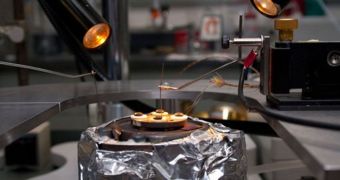Scientists at the Harvard University School of Engineering and Applied Sciences (SEAS) have created the world's first hydrogen-based solid-oxide fuel cells (SOFC) that can run even after their hydrogen reserves are depleted.
This is made possible by that fact that the devices can also store electrochemical energy, just like batteries can. The achievement could be translated into significant benefits for clean energy generation.
According to the research group, the new fuel cells is capable of operating for a little while longer after the hydrogen fuel that powers it is depleted. Details of the research appear in the latest online issue of the journal Nano Letters.
The group believes that the work will be used extensively in applications where small-scale, portable, compact and lightweight power supplies are needed for electricity generation. The devices could also come in handy in situations where power is likely to go out during various processes.
“Unmanned aerial vehicles, for instance, would really benefit from this. When it's impossible to refuel in the field, an extra boost of stored energy could extend the device's lifespan significantly,” SEAS postdoctoral fellow and lead study author, Quentin Van Overmeere, explains.
“This thin-film SOFC takes advantage of recent advances in low-temperature operation to incorporate a new and more versatile material,” adds the principal investigator of the new research, SEAS associate professor of materials engineering, Shriram Ramanathan
He explains that the anode of the fuel cell is made up of vanadium oxide (VOx), a multi-functional material that enables both the generation and store of electrical energy. SEAS graduate student Kian Kerman was a coauthor of the work.
Ramanathan says that the fuel cell is currently only a proof of concept. He adds that the device is capable of continuing power production (at a current density of 0.2 mA/cm2) for about 3 minutes and 30 seconds after the hydrogen is gone. This is 14 times more than what any similar technology can do.
SEAS scientists say that devices outfitted with the new technology could be made available for applications testing and wide-scale use within 24 months.
Their work was made possible by the support of the US National Science Foundation (NSF), Le Fonds de la Recherche Scientifique - FNRS, and the US Department of Defense's (DOD) National Defense Science and Engineering Graduate Fellowship Program.

 14 DAY TRIAL //
14 DAY TRIAL //